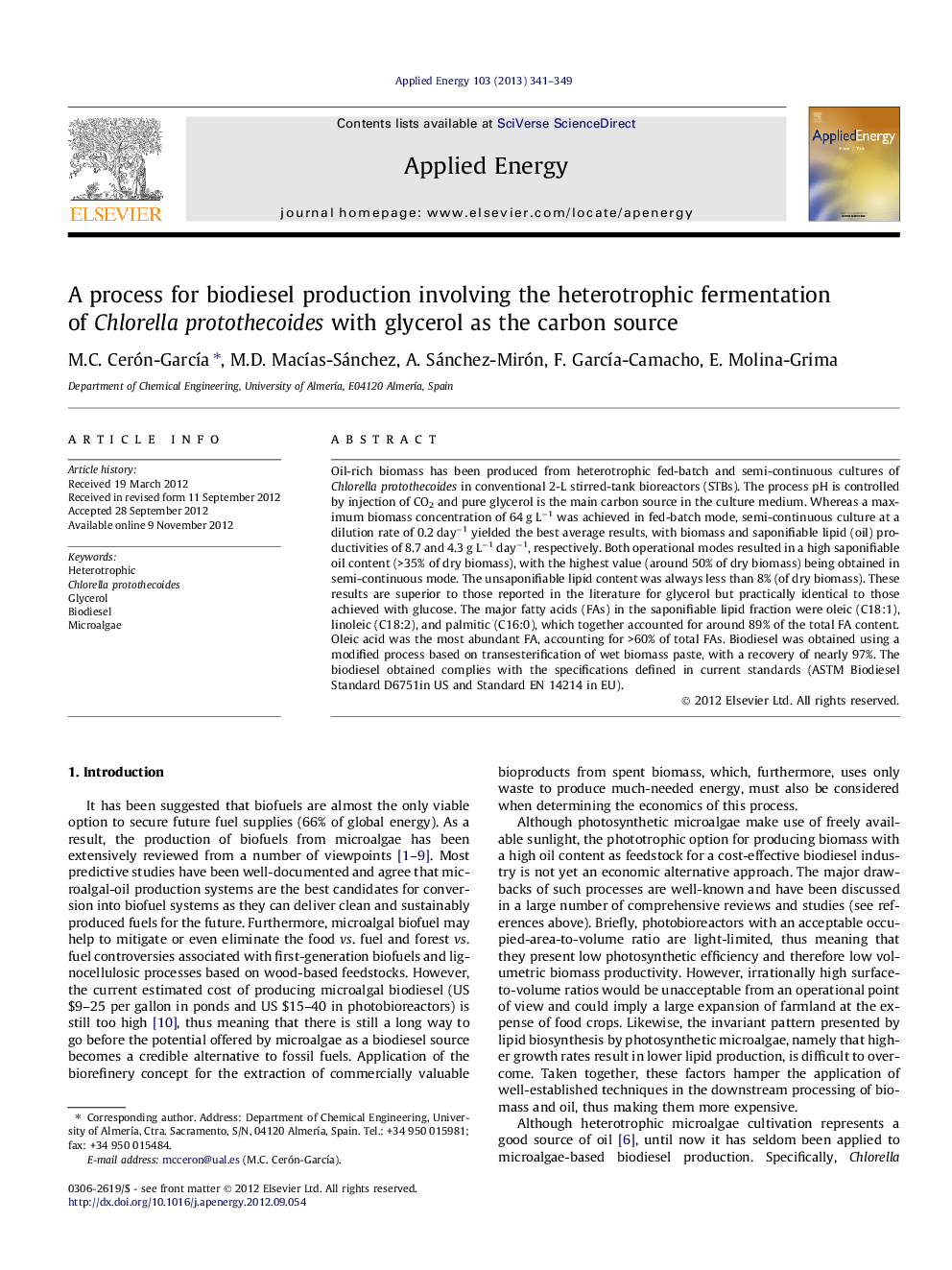| Article ID | Journal | Published Year | Pages | File Type |
|---|---|---|---|---|
| 243008 | Applied Energy | 2013 | 9 Pages |
Oil-rich biomass has been produced from heterotrophic fed-batch and semi-continuous cultures of Chlorella protothecoides in conventional 2-L stirred-tank bioreactors (STBs). The process pH is controlled by injection of CO2 and pure glycerol is the main carbon source in the culture medium. Whereas a maximum biomass concentration of 64 g L−1 was achieved in fed-batch mode, semi-continuous culture at a dilution rate of 0.2 day−1 yielded the best average results, with biomass and saponifiable lipid (oil) productivities of 8.7 and 4.3 g L−1 day−1, respectively. Both operational modes resulted in a high saponifiable oil content (>35% of dry biomass), with the highest value (around 50% of dry biomass) being obtained in semi-continuous mode. The unsaponifiable lipid content was always less than 8% (of dry biomass). These results are superior to those reported in the literature for glycerol but practically identical to those achieved with glucose. The major fatty acids (FAs) in the saponifiable lipid fraction were oleic (C18:1), linoleic (C18:2), and palmitic (C16:0), which together accounted for around 89% of the total FA content. Oleic acid was the most abundant FA, accounting for >60% of total FAs. Biodiesel was obtained using a modified process based on transesterification of wet biomass paste, with a recovery of nearly 97%. The biodiesel obtained complies with the specifications defined in current standards (ASTM Biodiesel Standard D6751in US and Standard EN 14214 in EU).
